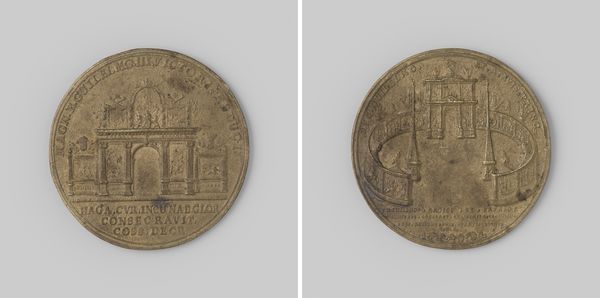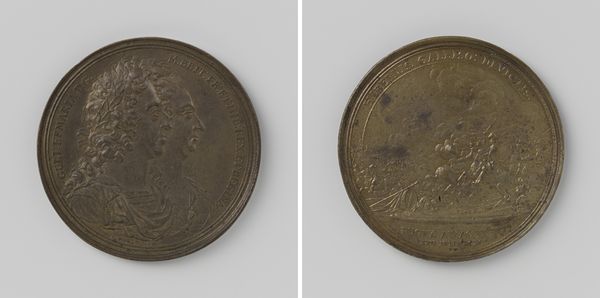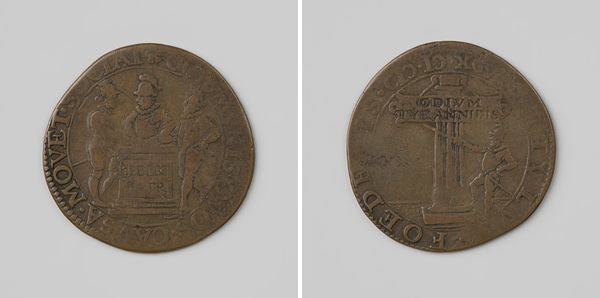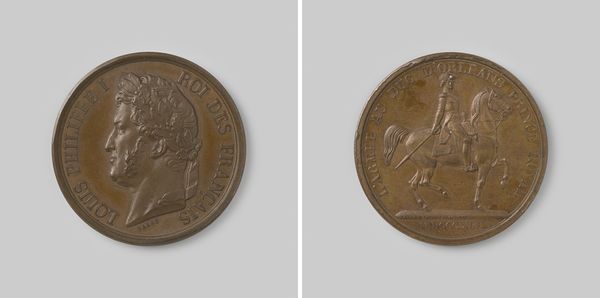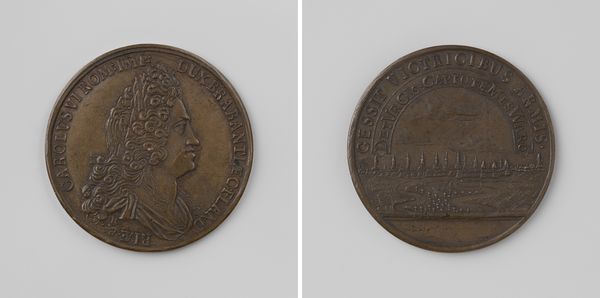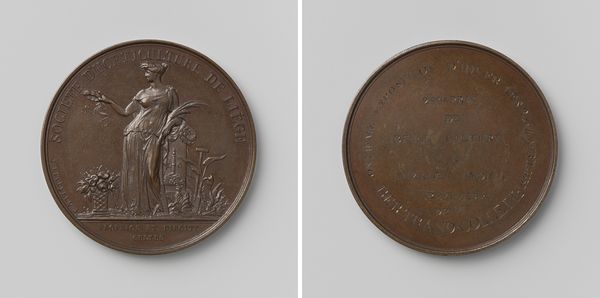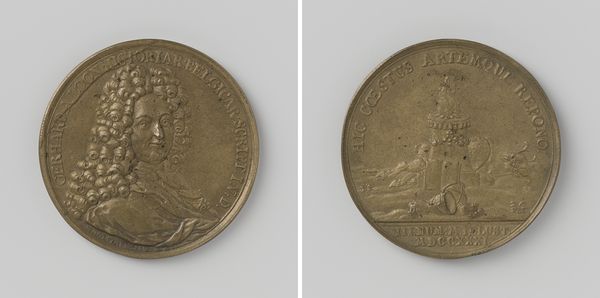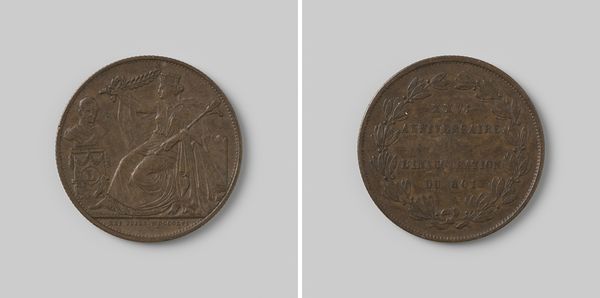
relief, bronze
#
portrait
#
neoclacissism
#
relief
#
bronze
#
cityscape
#
history-painting
Dimensions: diameter 3.7 cm, weight 18.70 gr
Copyright: Rijks Museum: Open Domain
Editor: So, this bronze relief is titled *Intocht van de troepen der geallieerden in Parijs 1814,* or "The Entry of the Allied Troops into Paris 1814," by Johann Thomas Stettner. It looks like a coin or a medallion. I find the depiction of such a grand historical event on such a small scale really fascinating. What grabs your attention about this piece? Curator: It's more than just size, isn't it? This is neoclassicism distilled – order, restraint, and the idealized past, all pressed into bronze. One side celebrates those powerful figures, almost godlike, while the other shrinks a grand event into something contained and collectible. Like a memory being carefully stored. It speaks to the very nature of how we try to capture and control history, doesn't it? But tell me, does it feel triumphant or... something else? Editor: Something else, definitely. It feels more like a memento, perhaps even a souvenir. It lacks the overt bombast I’d expect from such a scene. What about the artist himself? What do you know about Stettner? Curator: Stettner? More a craftsman than a Romantic rebel, I suspect. Solidly Neoclassical in his approach, immortalizing history with measured precision. But even within those constraints, I see hints of something…a longing perhaps? For the stability these leaders promised? Or a silent scream for an impossible stability. A fascinating dialogue. Do you think art has to reflect one singular point of view to have any real weight? Editor: It’s definitely not a requirement, and this medallion proves it! I came in seeing one thing, but you pointed out this element of contained restraint, this sense of…longing. That adds such a rich, new layer to the experience of looking at it. Thanks! Curator: The best art is an excuse to see how we each uniquely exist in the world.
Comments
No comments
Be the first to comment and join the conversation on the ultimate creative platform.

